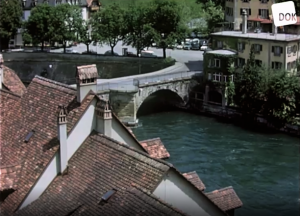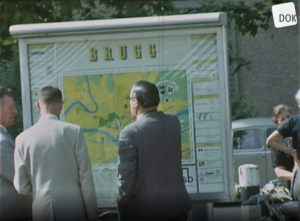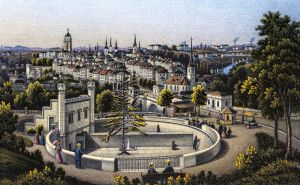TITEL (LFS03980) : Différence entre versions
(Page créée avec « {{FicheSequence |titreCree=Non |titre=Ausflug Burg und Bern |fonds=Haus des Dokumentarfilms |idSupport=LFS03980 |dateDebut=1963 |video=LFS_03980_Burg_Bern |coloration=Coul... ») |
|||
| (8 révisions intermédiaires par le même utilisateur non affichées) | |||
| Ligne 1 : | Ligne 1 : | ||
{{FicheSequence | {{FicheSequence | ||
|titreCree=Non | |titreCree=Non | ||
| − | |titre=Ausflug | + | |titre=Ausflug Brugg und Bern |
|fonds=Haus des Dokumentarfilms | |fonds=Haus des Dokumentarfilms | ||
|idSupport=LFS03980 | |idSupport=LFS03980 | ||
|dateDebut=1963 | |dateDebut=1963 | ||
|video=LFS_03980_Burg_Bern | |video=LFS_03980_Burg_Bern | ||
| + | |institution_dorigine=Haus des Dokumentarfilms | ||
|coloration=Couleur | |coloration=Couleur | ||
|son=Muet | |son=Muet | ||
| − | |timecode=00: | + | |timecode=00:03:57 |
|duree=00:00:00 | |duree=00:00:00 | ||
|genre=Film_amateur | |genre=Film_amateur | ||
|format_original=Super 8 mm | |format_original=Super 8 mm | ||
| + | |droits=Landesfilmsammlung BW | ||
|Etat_redaction=Non | |Etat_redaction=Non | ||
|Etat_publication=Non | |Etat_publication=Non | ||
| − | |lieuTournage= | + | |apercu=Ausflug_Brugg_Bern_1.png |
| + | |lieuTournage=47.48444, 8.20834 | ||
| + | |Resume_en=Bus tour to the Swiss cities of Brugg and Bern | ||
| + | |Description_de=Ausflug des Gemeinderates Villingen-Schwennigen (?); Stadtansichten Brugg mit Schlösschen Altenburg, Besichtigung der nahe gelegenen Habsburg, dort Rast; Bern mit Bärengraben und Bären, Häuserfront von der Nydeggbrücke, Zytgloggenturm u.a. | ||
| + | |Contexte_et_analyse_de=[[Fichier:Brugg 1.png|vignette|Blick von der Altstadt von Brugg auf den Fluss Aare (Foto: LFS)]] | ||
| + | |||
| + | Der stumme Farbfilm im Super 8 Format zeigt einen Busausflug des Gemeinderates Villingen-Schwennigen in die Schweizer Städte Brugg und Bern. Er unternahm regelmäßig Fahrten ins benachbarte Ausland und ließ dies filmisch dokumentieren (siehe: Informationsfahrt Gemeinderat von 1962). Der aktuelle Film ist von 1963 und beginnt mit der Abfahrt vor dem Rathaus in Villingen-Schwennigen. Teilnehmer und Teilnehmerinnen kommen mit Koffern, die sie unten im Bus verstauen. Das Bild ist schräg aufgenommen worden, eine expressionistisch anmutende Ästhetik, die für einen solchen ’offiziellen‘ Film überrascht und in dem Film auch nicht mehr aufgegriffen wird. | ||
| + | |||
| + | Es folgen Impressionen aus Brugg mit einer befahrenen Straße, alten Häusern und einem handgemalten Werbeschild für die Spezialität Brustspitzli, ½ Kg für 2,80 Franken. Bei dieser Spezialität handelt es sich um eine gekochte oder gegrillte Schweinsbrust, welche mit Gemüse und Kartoffeln herzhaft gefüllt ist. Immer wieder wechselt die Kameraperspektive, die Bilder werden aus der Hand gedreht und sind deshalb etwas unruhig. Im Mittelpunkt steht zunächst die Stadt Brugg. Dann wird der Fluss Aare aufgenommen und der Schwarze Turm, das Wahrzeichen der Stadt. Nach seinem Bau im 12. Jahrhundert wurde die Turmburg jahrelang von Graf Albrecht III. von Habsburg bewohnt. Seit 1846 dient das Gebäude als Bezirksgefängnis. Die Delegation wird vor einem Stadtplan von Brugg gezeigt und in einem Lokal mit Terrasse, wo eine Ansprache gehalten wird. Die Herren tragen Anzüge, Krawatten und oft schwarze Sonnenbrillen, die Damen schmucke Kostüme. Dies entspricht dem Stil der Zeit und hätte eine ungefähre Datierung des Materials ermöglicht, wenn das genaue Produktionsjahr nicht bekannt gewesen wäre. | ||
| + | |||
| + | [[Fichier:Brugg 2.png|vignette|Teilnehmer der Delegation vor einem Stadtplan von Brugg (Foto: LFS)]] | ||
| + | |||
| + | Dann steigt die Delegation eine Treppe hinab, wodurch die an der Reise beteiligten Personen genauer zu sehen sind. Nächste Station ist Bern, das aus verschiedenen Blickwinkeln gefilmt wird. In der folgenden Sequenz wird ein brauner Bär im Gehege gefilmt, der sich aufrichtet und auf seinen beiden Hinterbeinen steht. Vier Bären betteln beim Publikum um Essbares. Von einer Brücke gibt es den Blick auf die alten Häuser am Fluss Aare und auf Hinterhöfe. Es folgen Aufnahmen aus der Berner Altstadt mit der Kramgasse, durch die noch der Verkehr fließt, mit ihren berühmten Arkaden und dem spätgotischen Münster. Zu sehen ist das historische Rathaus mit imposantem Aufgang und das Denkmal eines Ritters mit einer Fahne des Berner Stadtwappens mit schwarzem Bären und Schlussbild ist ein Springbrunnen mit einem kleinen Obelisken. | ||
| + | |||
| + | [[Fichier:Bern Bärengraben um 1880 Foto Public Domain.jpg|vignette|Der Bärengraben in Bern um 1880 (Quelle: Public Domain)]] | ||
| + | |||
| + | In dem knapp vierminütigen Amateurfilm reist eine Delegation des Gemeinderates von Villingen-Schweningen mit dem Busunternehmen ‚Maier Reisen‘ in die Schweiz. Das seit 1923 existierende Unternehmen war ursprünglich nur auf den Transport von Milch und Milcherzeugnissen spezialisiert. Dies änderte sich 1933, als man sich einen LKW mit Sitzplatzaufbau kaufte, um erstmals Personen zu befördern. Im Laufe der Jahre expandierte die Firma und baute ein Großunternehmen auf, welches Reisen sowohl ins Inland als auch ins Ausland anbietet. Neben den Sehenswürdigkeiten der Städte und Aufnahmen der Delegation zeigt der Film immer wieder auch Aufnahmen aus der Natur, mit Wiesen, Wäldern, Hügeln und Flüssen. | ||
| + | Sowohl für die Stadt als auch für den Kanton Bern waren die 1960er Jahre eine regelrechte Blütezeit. Einen wesentlichen Beitrag dazu hat der Berner Zoo geleistet. Mit einem Tierbestand von 1.675 Tieren in 335 Arten war der Zoo seit 1954 eines der Aushängeschilder Berns. In diesem Privatfilm ist jedoch nicht der Zoo zu sehen, sondern der Berner Bärengraben, der ebenfalls eine Attraktion der Stadt ist. Zu sehen ist der vierte Bärengraben, der 1857 im östlichen Teil der Altstadt an der Nydeggbrücke eröffnet worden war. Im Bärengraben hatten die Bären zwar freien Auslauf, doch Tierschützer kritisierten die nicht artgerechte Haltung. Deshalb konnte 2009 ein neuer Bärenpark direkt am Ufer der Aare der Öffentlichkeit übergeben werden, der viel größeren Auslauf ermöglicht. | ||
| + | Seit ihrer Gründung ist die Stadt Bern eng mit Bären verbunden und hat sie als Wappentier gewählt. Deshalb ist das Motiv des schwarzen Bären vor goldenem Grund auf Flaggen, Brunnen und Gebäuden überall in der Stadt zu finden. Zu guter Letzt wird der auf dem Rathausplatz in Bern stehende ‚Vennerbrunnen‘ gezeigt. Die Venner hatten die Aufgaben eines Viertelsmeisters. Sie waren somit für die Harnischschau, die Steuererhebung, die Marktaufsicht und die Feuerwehr in einer Stadt zuständig. Im Mittelalter wurden in Bern die vier Venner von den Bäckern, den Schmieden, den Metzgern und den Gerbern gestellt. Der Vennerbrunnen gehört zu den Berner Altstadtbrunnen des 16. Jahrhunderts. Die Brunnenfigur, ein Venner, ein geharnischter Berner Bannerträger, ist jedoch nur eine Kopie. Das Original befindet sich im Berner Historischen Museum. | ||
| + | Pol Wilhelm | ||
| + | |Contexte_et_analyse_en=[[Fichier:Brugg 1.png|vignette|View from the old town of Brugg on the river Aare (Foto: LFS)]] | ||
| + | |||
| + | The silent color film in Super 8 format shows a bus excursion by the Villingen-Schwennigen municipal council to the Swiss cities of Brugg and Bern. They made trips to neighboring countries regularly and have documented this on film (see flm : "Informationsfahrt Gemeinderat von 1962"). The current film is from 1963 and begins with the departure in front of the town hall in Villingen-Schwennigen. Participants come with suitcases, which they stow down in the bus. The picture was taken at an angle, an expressionist aesthetic that surprises for such an 'official' film and is no longer taken up in the film. | ||
| + | |||
| + | This is followed by impressions from Brugg with a busy street, old houses and a hand-painted advertising sign for the specialty “Brustspitzli”, ½ kg for 2.80 francs. This specialty is a boiled or grilled pork breast, which is heartily filled with vegetables and potatoes. The camera perspective changes again and again, the pictures are rotated by hand and are therefore a bit restless. The focus is initially on the city of Brugg. Then the river Aare is recorded and the Black Tower, the symbol of the city. After its construction in the 12th century, the tower castle was inhabited for years by Count Albrecht III. by Habsburg. The building has served as a district prison since 1846. The delegation is shown in front of a map of Brugg and in a restaurant with a terrace, where a speech is given. The men wear suits, ties and often black sunglasses, the women smart costumes. This is in keeping with the style of the time and would have allowed an approximate dating of the material had the exact year of production not been known. Then the delegation descends a staircase, so that the people involved in the trip can be seen more closely. | ||
| + | |||
| + | [[Fichier:Brugg 2.png|vignette|Participants of the travel before a city map of Brugg (Foto: LFS)]] | ||
| + | |||
| + | The next stop is Bern, which is filmed from different angles. In the following sequence, a brown bear is filmed in the enclosure, which stands up and stands on both of its hind legs. Four bears beg the audience for something to eat. From a bridge there is a view of the old houses on the river Aare and of backyards. This is followed by shots from the old town of Bern with the Kramgasse, through which the traffic still flows, with its famous arcades and the late Gothic cathedral. You can see the historic town hall with an imposing staircase and the monument of a knight with a flag of the Bernese coat of arms with a black bear and the final image is a fountain with a small obelisk. | ||
| + | |||
| + | [[Fichier:Bern Bärengraben um 1880 Foto Public Domain.jpg|vignette|The famous bear pit in Bern around 1880 (Quelle: Public Domain)]] | ||
| + | |||
| + | In the almost four-minute amateur film, a delegation from the Villingen-Schweningen municipal council travels to Switzerland with the bus company 'Maier Reisen'. The company, which has existed since 1923, originally was specialized in the transport of milk and milk products only. This changed in 1933 when a truck with a seat structure was bought to transport people for the first time. Over the years, the company expanded and built a large company that offers travel both domestically and abroad. In addition to the sights of the cities and photos taken by the delegation, the film also repeatedly shows photos from nature, with meadows, forests, hills and rivers. | ||
| + | |||
| + | The 1960s were a real boom for both the city and the canton of Bern and the zoo has made a significant contribution to this. With an animal population of 1,675 animals in 335 species, the zoo has been one of Bern's flagships since 1954. However, this private film does not show the zoo, but the Bern Bear Pit, which is also an attraction of the city. You can see the fourth bear pit, which was opened in 1857 in the eastern part of the old town at the Nydeggbrücke. In the bear pit, the bears were allowed to run freely, but animal rights activists criticized the unsuitable keeping. Therefore, in 2009 a new bear park was opened to the public directly on the banks of the Aare, which allows much larger exercise. | ||
| + | |||
| + | The city of Bern has been closely associated with bears since it was founded and has chosen them as their heraldic animal. That is why the motif of the black bear in front of a golden background can be found on flags, fountains and buildings all over the city. Last but not least, the 'Vennerbrunnen' on the town hall square in Bern is shown. The Venner had the duties of a quarter master. They were therefore responsible for the harness show, tax collection, market supervision and the fire brigade in a city. In the Middle Ages, the four Venners in Bern were provided by the bakers, the blacksmiths, the butchers and the tanners. The Vennerbrunnen is one of Bern's old town fountains from the 16th century. The fountain figure, a Venner, an armored Bernese standard bearer, is only a copy. The original is in the Bern Historical Museum. | ||
| + | Pol Wilhelm | ||
| + | |Bibliographie=Bannerherr: Wikipedia, https://de.wikipedia.org/wiki/Bannerherr, (konsultiert 24.11.2020); Bär (Wappentier): Wikipedia, https://de.wikipedia.org/wiki/B%C3%A4r_(Wappentier), (konsultiert 24.11.2020); Bärenpark: https://de.wikipedia.org/wiki/B%C3%A4renpark_Bern; Busreisen Maier: http://www.busreisen-maier.de/ueber-uns.html, (konsultiert 24. 11.2020); Schwarzer Turm: http://www.burgenwelt.org/schweiz/schwarzer_turm/object.php, (konsultiert 24.11.2020); „Stadt des Bären“: https://www.bern.com/de/detail/stadt-des-baeren, (konsultiert 24.11.2020). | ||
}} | }} | ||
Version actuelle datée du 21 juillet 2021 à 16:22
Résumé
Description
Ausflug des Gemeinderates Villingen-Schwennigen (?); Stadtansichten Brugg mit Schlösschen Altenburg, Besichtigung der nahe gelegenen Habsburg, dort Rast; Bern mit Bärengraben und Bären, Häuserfront von der Nydeggbrücke, Zytgloggenturm u.a.
Contexte et analyse
The silent color film in Super 8 format shows a bus excursion by the Villingen-Schwennigen municipal council to the Swiss cities of Brugg and Bern. They made trips to neighboring countries regularly and have documented this on film (see flm : "Informationsfahrt Gemeinderat von 1962"). The current film is from 1963 and begins with the departure in front of the town hall in Villingen-Schwennigen. Participants come with suitcases, which they stow down in the bus. The picture was taken at an angle, an expressionist aesthetic that surprises for such an 'official' film and is no longer taken up in the film.
This is followed by impressions from Brugg with a busy street, old houses and a hand-painted advertising sign for the specialty “Brustspitzli”, ½ kg for 2.80 francs. This specialty is a boiled or grilled pork breast, which is heartily filled with vegetables and potatoes. The camera perspective changes again and again, the pictures are rotated by hand and are therefore a bit restless. The focus is initially on the city of Brugg. Then the river Aare is recorded and the Black Tower, the symbol of the city. After its construction in the 12th century, the tower castle was inhabited for years by Count Albrecht III. by Habsburg. The building has served as a district prison since 1846. The delegation is shown in front of a map of Brugg and in a restaurant with a terrace, where a speech is given. The men wear suits, ties and often black sunglasses, the women smart costumes. This is in keeping with the style of the time and would have allowed an approximate dating of the material had the exact year of production not been known. Then the delegation descends a staircase, so that the people involved in the trip can be seen more closely.
The next stop is Bern, which is filmed from different angles. In the following sequence, a brown bear is filmed in the enclosure, which stands up and stands on both of its hind legs. Four bears beg the audience for something to eat. From a bridge there is a view of the old houses on the river Aare and of backyards. This is followed by shots from the old town of Bern with the Kramgasse, through which the traffic still flows, with its famous arcades and the late Gothic cathedral. You can see the historic town hall with an imposing staircase and the monument of a knight with a flag of the Bernese coat of arms with a black bear and the final image is a fountain with a small obelisk.
In the almost four-minute amateur film, a delegation from the Villingen-Schweningen municipal council travels to Switzerland with the bus company 'Maier Reisen'. The company, which has existed since 1923, originally was specialized in the transport of milk and milk products only. This changed in 1933 when a truck with a seat structure was bought to transport people for the first time. Over the years, the company expanded and built a large company that offers travel both domestically and abroad. In addition to the sights of the cities and photos taken by the delegation, the film also repeatedly shows photos from nature, with meadows, forests, hills and rivers.
The 1960s were a real boom for both the city and the canton of Bern and the zoo has made a significant contribution to this. With an animal population of 1,675 animals in 335 species, the zoo has been one of Bern's flagships since 1954. However, this private film does not show the zoo, but the Bern Bear Pit, which is also an attraction of the city. You can see the fourth bear pit, which was opened in 1857 in the eastern part of the old town at the Nydeggbrücke. In the bear pit, the bears were allowed to run freely, but animal rights activists criticized the unsuitable keeping. Therefore, in 2009 a new bear park was opened to the public directly on the banks of the Aare, which allows much larger exercise.
The city of Bern has been closely associated with bears since it was founded and has chosen them as their heraldic animal. That is why the motif of the black bear in front of a golden background can be found on flags, fountains and buildings all over the city. Last but not least, the 'Vennerbrunnen' on the town hall square in Bern is shown. The Venner had the duties of a quarter master. They were therefore responsible for the harness show, tax collection, market supervision and the fire brigade in a city. In the Middle Ages, the four Venners in Bern were provided by the bakers, the blacksmiths, the butchers and the tanners. The Vennerbrunnen is one of Bern's old town fountains from the 16th century. The fountain figure, a Venner, an armored Bernese standard bearer, is only a copy. The original is in the Bern Historical Museum.
Pol WilhelmBibliographie
- ↑ Cette fiche est en cours de rédaction. À ce titre elle peut être inachevée et contenir des erreurs.








